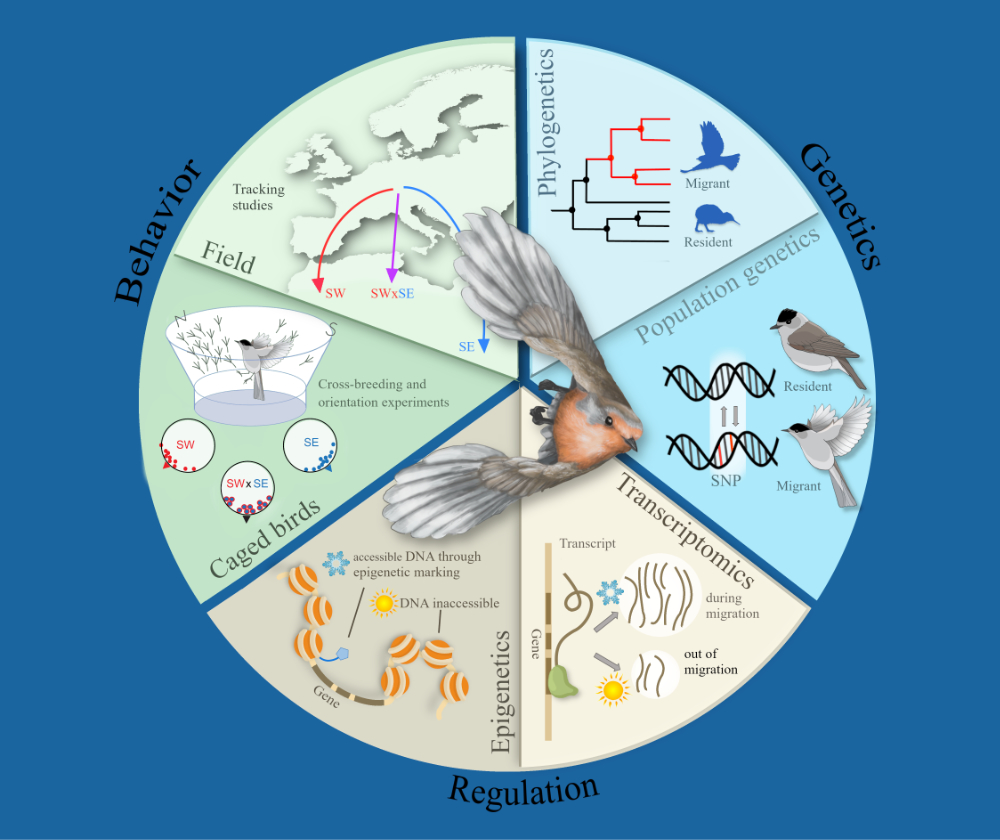Speaker
Description
The Bogong moth is an iconic Australian insect species of significant cultural and ecological relevance and also a remarkable nocturnal migrator. Each spring freshly emerged Bogong moths escape the deadly high temperatures in their breeding grounds in southern Queensland and north-western New South Wales by embarking on a 1000 km journey to locate specific, cool, ridge-top caves in the Australian Alps where they spend the next months in a resting state called aestivation. After summer, the same individuals will return to their breeding grounds to mate, lay eggs and die. The next generation emerging in spring will then continue the migratory cycle. This yearly migration of naïve Bogong moths is an excellent phenomenon to tackle fundamental questions of nocturnal long-distance migration, which our group studies from behavioral, neurobiological and genetic angles.
Our behavioral work has revealed that Bogong moths use a combination of the Earth’s magnetic field, landmarks and the starry sky to orient during their migration. To illuminate how these cues are detected and translated into steering commands, we analyzed the sensory periphery (compound eyes and ocelli) and known navigational brain-centers. This included electrophysiological recordings from neurons processing starry sky cues, transcriptional profiling of brains, antenna and eyes comparing migratory and aestivating states, as well as identification and, ongoing, localization of light sensors, (opsins) and putative magneto-sensors (cryptochromes). The anatomical ground plan of the Bogong moth brain surprisingly lacks obvious specializations compared to non-migratory lepidopterans, prompting ongoing studies of neural circuits at synaptic resolution.
To investigate the genetic foundations of the Bogong moth’s migrations, we exploit two features of their life history. First, the moths need to pinpoint a limited set of caves, year after year, converging from widely spread breeding grounds. This results in flight directions that differ by up to 120º for moths starting their migration at the extremes of their breeding range. Each moth only migrates once, suggesting that the specific migratory heading is inherited. Second, the entire migratory journey is performed by a single generation of moths, providing a simpler system compared to the multigenerational migration of other well-studied insect migrants, like the Monarch butterfly or the oriental armyworm. To use these advantages, we sequenced and annotated a high-quality reference genome of the Bogong moth and carried out whole-genome resequencing across the geographic range of their breeding grounds and summer caves. While still preliminary, the data indicate that Bogong moths likely form a single panmictic population with low migratory connectivity. This apparent contradiction with an inherited migratory heading is the backdrop for further investigation into possible epigenetic determinates of migratory direction. The one-generation migratory system of the moths should enable us to raise and study migrants even in the lab. The establishment of a breeding facility as well as a CRISPR/Cas9 workflow on another moth species in Lund paves the way to exploit the Bogong moth as an ideal model to study the molecular and physiological mechanisms of compass sensing, as well as the genetic underpinnings of nocturnal long-distance insect migration.

